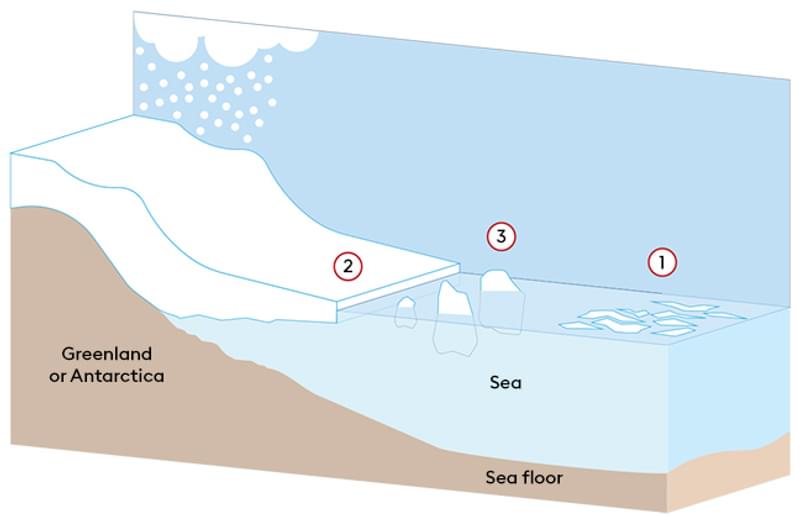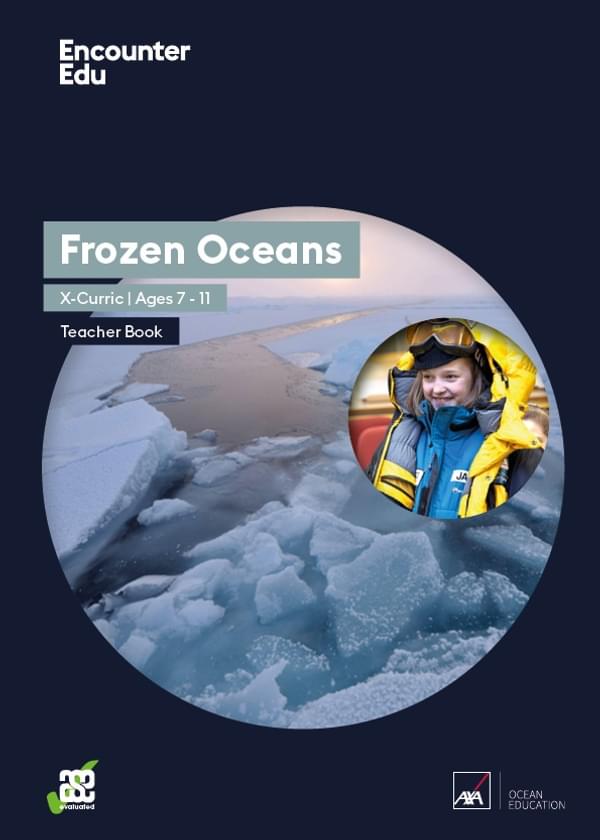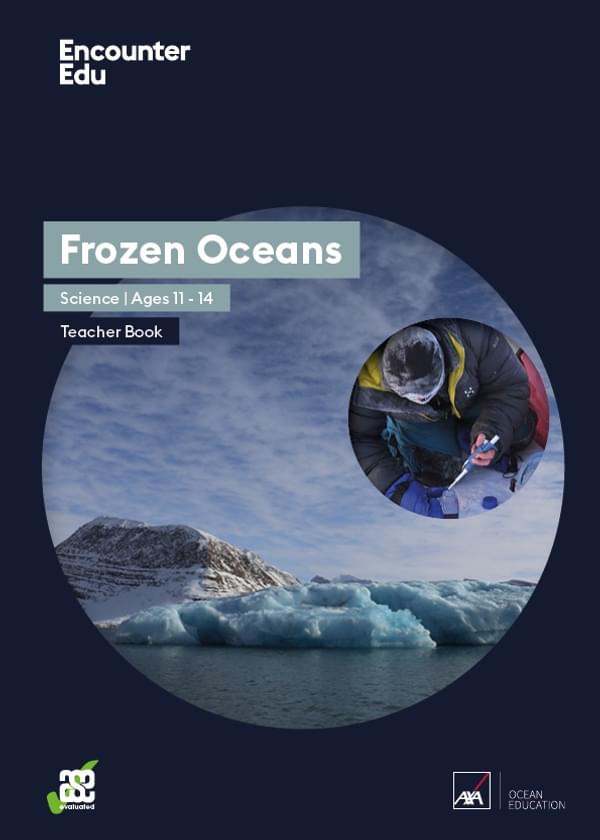Learn more: What are ice caps and how are they formed?
Let’s start with the term ‘polar ice cap’. These are areas of ice at the poles of any planet. Mars, like Earth, has two polar ice caps, but instead of water ice, carbon dioxide gas (CO2) freezes at the poles on Mars. Now let’s take a closer look at the ice in polar regions. Broadly, there are two categories of ice:
- Ice that is formed from snow falling on land.
- Ice that is formed from the sea freezing.

1. Ice formed in the sea
Sea ice is formed by the sea freezing. This seasonal occurrence is the defining feature of the Arctic Ocean and responsible for effectively doubling the size of Antarctica in the winter.
2. Ice formed on land
Ice sheets are vast areas of ice that form over thousands of years from precipitation and exist in two places on Earth: Greenland and Antarctica. These vast ice sheets are not uniform areas; they consist of distinct flats and moving glaciers. An ice cap is an ice sheet smaller than 50,000 square kilometre, found for example atop a mountain. It is distinguished from a glacier by moving in multiple directions.
3. Land ice at sea
Some ice formed on land is closely associated with the ocean, but as it isn’t formed in the ocean, it is not properly sea ice. An ice shelf is the portion of an ice sheet that spreads out over water. In Antarctica, the largest ice shelf stretches over 500 miles from the ‘coast’.
Sections of ice shelf break off or ‘calve’ which are known as icebergs. There are many other names for ice, but these are the main ones that should steer you through this frozen world.
Common misconceptions
The first are the terms ‘polar ice cap’ and ‘ice cap’. The former refers to all the ice at the top and bottom of a planet and can be any size, the latter is an area of ice smaller than 50,000 square kilometre, anywhere on a planet.
The second is the land and sea in the Arctic and Antarctic. The Antarctic is dominated by the continental land mass of Antarctica, surrounded by the Southern Ocean. The land is covered by a vast ice sheet with ice shelves stretching hundreds of miles offshore.
By contrast, the Arctic is dominated by the Arctic Ocean, surrounded by land: the largest single piece being Greenland, but including parts of Canada, Russia, Scandinavia and the USA. The ocean is covered by seasonal, semi-permanent, ever-shifting sea ice, with the land masses being covered in ice sheets and caps.

Cross-curricular | Ages 7-11
Frozen Oceans
Based on journeys undertaken by real explorers and scientists, the Frozen Oceans (Primary) education programme is designed to introduce students to what life is like in the High Arctic.
